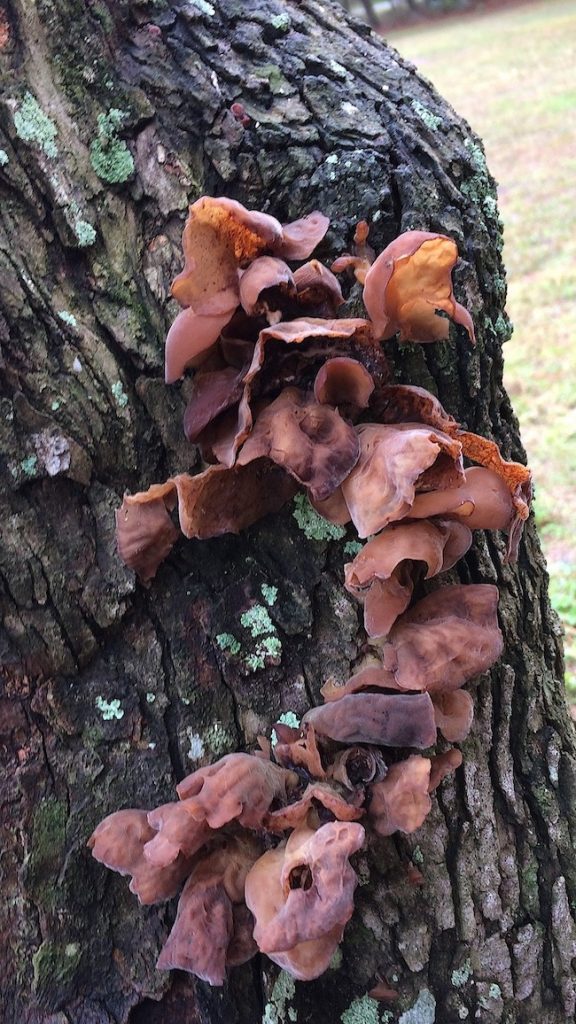
Wood Ears on a dead oak. Photo by Green Deane
Wood Ear Mushrooms, Auricularia auricula, Auricularia polytricha. Also called Cloud Ear, Tree Ear, Black fungus, and Jelly Ear, they are in a group known as Jelly Fungus. These are privately found and used in North America though they are a commercial product in Asia and can be bought. There are several species of Wood Ear and they are all used much the same way and look similar.
We have two nutritional results for Wood Ears, a commercial one and one from a study. The folks who sell dried Wood Ear say they have per 100 grams dried: 357 calories, 85.71 grams carbohydrates, zero protein, zero fat, 57.1 grams fiber, 38.57 mg iron and 143 mg sodium. The study lab says 208.27 calories, 14.12 grams protein, 3.53 grams fat, 31.77 fiber, 97.39 mg iron, 49.42 sodium, 17.65 RE vitamin A, B1 (thiamin) 0.176 mg, B2 (riboflavin) 0.423 mg, B3 (niacin) 2.50. The macrominerals are 758.95 mg potassium, 293 mg phosphorus, and 250 mg calcium.
As you are more likely to use one ounce dried the breakdown is: 59 calories, 4 grams protein, 1 grams fat, 9 fiber, 27.59 mg iron, 14 sodium, 5 RE vitamin A, B1(thiamin) 0.05 mg, B2 (riboflavin) 0.12 mg, B3 (niacin) 0.71 mg. The macrominerals are 215 mg potassium, 83 mg phosphorus, and 71 mg calcium.
When cooked they are firm and crunchy with a musty flavor if you don’t flavor them. One way to do that is to dehydrate them then rehydrate them in some flavor you want to use such as broth, juice… or bourbon.
Auricularia auricula redundantly means Little ear ear. In Asia they are known as Yung ngo, Kikurage, Mokurage, and Aragekikurage. Polytricha means having many hairs.
Green Deane’s Itemized Plant Profile
IDENTIFICATION: Tough, gelatinous, rubbery, flabby, irregular ear- to cup-shaped fruiting bodies with ribs near the point of attachment. Usually dark brown. Spore print white, fertile surface downward. Single or in clusters.
TIME OF YEAR: Year around and or seasonally depending upon where yo live.
ENVIRONMENT: On hardwood with bark still in place. I look for them on branches of dead oaks.
METHOD OF PREPARATION: Rinse and remove any tough patches. Used for their chewy texture fresh or dry. Soak dry ones in a flavored liquid you like, add them to whatever you are cooking. They work best with foods you are boiling, stir-frying, or sautéing. Use quickly as they don’t store well.


hey, whatever happened to your youtube channel?
It’s still up and running. I need to make some new videos. Life sometimes get in the way of living.